We continue to publish the materials of Spas TV program My Path To God where Priest George Maximov interviews people who converted to Orthodoxy. The guest of today’s program is Abdias Bijanov, an Orthodox Assyrian. His search for the meaning of life initially led him to the Nestorian Assyrian Church of the East, but eventually he found the Truth in Orthodoxy. In this interview we will learn about the Orthodox Assyrians, the Urmian Mission and the importance of understanding the difference between the teachings of Nestorius and the Holy Fathers. Abdias will also tell us who helped him find the answers to the questions of faith and why Assyrians in Russia need to have worship services in their native language. We will also discuss whether or not there is a connection between religion and national identity.
Priest George Maximov: Hello! You’re watching My Path To God. The guest of today’s program is Abdias. He is Assyrian. Assyrians are one of the nations of Russia. They started migrating to the Russian Empire a long time ago to save their lives, because living in the Moslem environment was difficult and even dangerous. Their migration to Russia was also influenced by the activity of the Urmian Orthodox Mission in Iran. Unfortunately, few people know about this mission these days, even though it was very successful. Abdias, since this page of history is little known, maybe you can start by telling us briefly about the Urmian Mission and migration of Assyrians to the Russian Empire.
Abdias Bijanov: The Urmian Mission was based in the city of Urmia located west of the Urmia Lake in Persia. The Assyrians have been living there since ancient times. They belonged to the church that unfortunately separated from Orthodoxy. However, in late 19th century, one diocese of this church and its bishop rejoined the Russian Orthodox Church. This led to the establishment of the Urmian Mission in 1898.
When the Russian Orthodox missionaries arrived in Urmia, the Assyrians were oppressed by the Moslems. The Assyrians were humiliated and abused. In her book about Father Pimen (Belolikov) who later became the head of the Urmian mission, Olga Khodakovskaya wrote that the Assyrians welcomed the Russians on their land, because the Russian Church brought them salvation and help.
The mission was growing fast. In 1905 it had two bishops (ethnic Assyrians) and more than 60 priests and deacons. There were about 40 churches and 60 schools attended by 2,000 students. Unfortunately, after World War I and the revolution in Russia the Church encountered big problems. Escaping the Moslem oppression, many Assyrians migrated to Russia, while others fled to Iran. Although many of them perished, up to 1962 there was an Assyrian Orthodox bishop who acted as the successor of the Urmian Mission, attending to the needs of the Orthodox Assyrians of the diocese. He lived in the USA.
I’m not the descendant of those Orthodox Assyrians who were converted by the Urmian Mission. Before my conversion to Orthodoxy I used to go to the Assyrian Church of the East.
Father George: Could you tell us a little about this church?
Abdias: The Assyrian Church of the East is a very interesting church. It brought together all nations of the East, including Arabs, Assyrians, Jews who had converted to Orthodoxy and some other nations living in Ctesiphon and other cities of Persia. This ancient church was a part of the Antiochian Church, and its Catholicos reported to the Antiochian Patriarch. The relations between the churches were excellent. Despite unfavorable geographic location, wars and oppression, the church lived on. This Church of the East was a part of the ancient unified Church. It was not separated from Christians in other countries and nobody could defeat it.
Nestorius is still venerated as a saint in the Assyrian Church of the East.
However, in 431 the Third Ecumenical Council condemned the teachings of Nestorius. Unfortunately, later, although not right away, a considerable number of members of the Church of the East adopted the Nestorian teachings and as a result separated from the rest of the Church that agreed with the resolutions of the Third Ecumenical Council. Nestorius is still venerated as a saint in the Assyrian Church of the East, just like his teachers Theodore of Mopsuestia and Diodore of Tarsus, whose teachings were condemned by the Fifth Ecumenical Council. They contributed to the Nestorian theology. This theology is based on several ideas.
Firstly, it is based on the idea that Christ has two knonmas. Knoma is translated as hypostasis. Nestorians separate human and divine hypostases of Christ, while according to our Orthodox teaching one Divine hypostasis of the Son after incarnation has inseparable divine and human natures. The Nestorians claim that there are two natures and two hypostases.
Secondly, members of the Assyrian Church usually do not refer to the Virgin Mary as Theotokos, often alleging that the Assyrian language does not have such a word, so they can’t call Her Theotokos simply for linguistic reasons. In fact, this is not true. Mother of God is translated as Yaldath Alaha, while Theotokos is Emeh Alaha. These words do not diminish the greatness and stature of the Most Holy Theotokos. In Peshitta, the ancient Syriac translation of the Bible, we can see that Theotokos’ relative Elisabeth refers to Her as “the mother of my Lord” (Luke, 1:43).
Father George: Did all Assyrians follow the Nestorians?
Abdias: Not all of them, but the majority. Some became Monophysites, while 25% remained Orthodox Christians. Until the 800s, the latter had their own Catholicos who was later persuaded to support Nestorianism. After he succumbed to this heresy, the Antiochian Patriarch ordained another Catholicos. He moved from town to town, attending to the needs of the Orthodox Assyrians.
The Orthodox Assyrians have a great ancestry, including St. Ephraim of Syria, St. Isaac of Syria, and John Chrysostom, a great luminary of faith.
Nestorianism was inculcated gradually and sometimes quite aggressively. For example, in the late 6th century, the monastic guidelines of Rabban Dadsho instructed to ban from the monastery “any brother who is known… to reject Mar Diodore, Mar Theodore and Mar Nestorius or their interpretation of faith[1].” However as early as the 7th century, such bishops of the Church of the East as Henana of Adiabene and Martyrius (Sahdona) taught in the Orthodox way that Christ had one knoma (hypostasis) and two natures.
Father George: Please tell us, how did you make the decision to convert to Orthodoxy?
Abdias: As many Assyrians, I was baptized in an Orthodox Church. However, I was not religious. Unfortunately, I lived without faith, like most people do, understanding however that there was no meaning in my life. Life went on and I was discovering many new things. I started attending the services in the Assyrian Church of the East and liked it very much.
Why do the Assyrians go to the Church of the East? My brothers and sisters whom I love and respect and my beloved relatives go to this church for several reasons.
Why do the Assyrians go to the Church of the East? Because of the feeling of national unity.
The first reason is the feeling of national unity. Although, in fact there is no unity and various groups of our nation belong to various denominations, including Catholic Syrians, Monophsyite Syrian Church, Assyrian Church of the East, the Orthodox Church, Chaldean Church, Assyrian Catholic Church… As you see, there is a great number of churches and people often go to them without knowing or understanding theology.
I went to this church because I liked it there, I liked the people. I didn’t have much faith. For example, I didn’t consider Christ to be my Lord. I simply watched what people were doing there. They loved God and prayed to Him. But which God? I lacked knowledge and understanding. I liked the service in Assyrian, it was beautiful and wonderful. In general, I went there only because of two things: the love for my nation and wonderful singing.
Our people celebrate Sharra. This holiday has been celebrated since ancient times in honor of certain saints. For example, Sharra d’Mar Gewargis is the feast day of St. George the Trophy Bearer. He is venerated by Assyrians of various denominations. According to an Assyrian legend, he was Assyrian, like his sister Nina who brought faith to Georgia.
I didn’t understand why we couldn’t refer to Theotokos as Mother of God. If She didn’t give birth to God, then who was He?
Assyrians gather at Sharra d’Mar Gewargis, pray and celebrate. The tables are set, everybody is dancing and everybody is happy. Unfortunately, nowadays few people understand the meaning of this feast day. Deacons and priests of the Assyrian Church of the East understand it, of course, but this cannot be said about regular parishioners. For example, I kept asking my relatives, friends and acquaintances, “What are we celebrating? Who was Mar Gewargis?”, but unfortunately nobody could answer. I didn’t understand why we can’t refer to Theotokos as the Mother of God. If She didn’t give birth to God, then to whom did she give birth? I got interested in these matters, started looking for the answers and found the Truth here, in Orthodoxy.
Father George: How did you discover Orthodoxy?
Abdias: I can’t say that I attended the services of the Assyrian Church of the East frequently. I prayed to God very hard, asking Him to let me know Him. I didn’t know Him or who He was. I was searching for the meaning of life. My natural sciences teacher used to tell me that there was an absolute truth and the relative truth. He said that science was a relative truth and only one percent, medical science, was the absolute truth. According to him, the rest was a lie and the absolute truth couldn’t exist in this world. I thought, “How could that be? That would mean that we all lie and that all our theses are wrong. It turned out that it wasn’t so. There was the Truth. And it helped me so much!”
I dabbled in Christianity. It was just dabbling, I can’t find a better word to describe my interest. I didn’t take it seriously. I listened to Adventists and other sectarians. However, once I saw a video recording of one God-pleaser. As my beloved father Priest Valentin said, God loved this man so much that He granted him a martyr's crown. It was a wonderful person, Priest Daniel Sysoyev. This man showed me the absolute Truth I was searching for.
For example, while in the Assyrian church I asked if this church was absolutely true and how did it differ from the Russian Church, nobody could answer me. I was told that I can go to both churches. Nobody told me that there was a difference. However, when I came to the Russian Orthodox Church, Father Daniel Sysoyev told me that there was a difference and that we couldn’t go to the Assyrian church.
Father George: Was your national identity affected by your conversion to Orthodoxy?
After our death, God won’t ask us about our nationality, He will ask us about our deeds and our faith.
Abdias: No. I’d like to quote Archimandrite Seraphim (Bitbunov), a wonderful person, a leader of the Assyrian community in Georgia. His laity comprises 4,000 people. The Assyrian laity asked Patriarch Elias to appoint somebody to give them spiritual guidance and help them, and the Patriarch appointed Archimandrite Seraphim. So, Father Seraphim used to say, that after our death God wouldn’t ask us about our last name, He will ask us about our deeds and our faith. So the importance of nationality shouldn’t be overstated.
Let’s take Orthodox Assyrians in Iraq, for example. They are wonderful people. Father Alfred Yakub lives with his laity in Gilani settlement. Assyrians have been living in Iraq for centuries and Orthodox Assyrians stayed there too. They live there and it is normal. They maintain their identity, as I mentioned they celebrate Sharra feasts, and their love is extended to absolutely everybody.
We must understand that our spiritual life starts with our faith. What kind of faith must we have? Our faith must be real. We all have the Bible as our common source of knowledge, so use it to learn what kind of faith we must have. Father Daniel said that the words of the Bible and what the theologians call consensus patrum, i.e. the consensus of the Fathers, is the absolute Truth, unchanging and eternal. Everything else is a lie. Orthodoxy is the absolute Truth, there is no other truth anywhere else.
Father George: Are the Orthodox Assyrians you know Orthodox because they are descendants of those who converted during the time of the Urmian Mission? Or did most of them find their way to Orthodoxy on their own?
Abdias: It is a good question. Many of my relatives went to the Assyrian Church of the East. As I said, I found my place in Orthodoxy, it is my true Church, the stronghold of faith, “the pillar and ground of the truth” (1 Timothy 3:15), to quote the Bible. I heard of many different cases. Some Assyrians that converted to Orthodoxy were Catholic, Monophysite or went to the Assyrian Church of the East. There were also those who always were Orthodox.
Father George: You mentioned that many of your relatives still go to the Assyrian Church of the East. How did they react to your choice? Did they understand and respect it or were they strongly opposed to it?
Abdias: I might have made some mistakes when I talked to them and for that I ask everybody’s forgiveness. These mistakes can chalked up to my young age. People reacted differently, some took it well, while some weren’t quite understanding. There were some problems and I still have some soul wounds. I stopped communicating with some of my relatives because I converted to Orthodoxy, but I maintain good relations with the others. There are many Orthodox people who just like me have friends in other denominations. My relatives go to another church, but I love them and their faith doesn’t prevent me from talking to them.
Father George: In general, when an Assyrian becomes Orthodox, is there a misunderstanding between him and his relatives?
Abdias: If he or she criticizes the Assyrian Church of the East, then there is some misunderstanding, of course (laughs). If he or she doesn’t criticize it, there is no misunderstanding. I don’t feel like criticizing it just for the sake of criticism, but if we get to discussing it, I have to call a spade a spade. Our Church in the document entitled, The Main Principles of Relations of the Russian Orthodox Church with Non-Orthodox Denominations, states that as a result of its rejection of the resolutions of the Third Ecumenical Council, the Assyrian Church of the East “departed from unity with the Orthodox Church” (paragraph 1.13). These are not my words, they are from the above-mentioned document of the church. You can quarrel with me, hate me, call my parents and pressure them by saying “Your son is criticizing us. How dare he!? His relatives are in this church!” Yes, they are in that church, but it doesn’t make them right. The Orthodox Church is the pillar and confirmation of the Truth. Founded by Jesus Christ, it maintains the apostolic faith.
Father George: Is there anything that the Orthodox Assyrians need?
If we had a priest who could pray in Assyrian, this would attract many Assyrians.
Abdias: As Archimandrite Seraphim, our beloved monk, said, Orthodox Assyrians need to have the worship services in their native language. This would bring other Assyrians to the church too, because it is interesting to them. We have a national self-identification since our childhood years, and it would be great if it could facilitate bringing the Orthodox faith to people. If the Patriarch would send us a priest who could pray in Assyrian, this would attract many Assyrians.
Father George: Is this language still widely spoken among the Assyrians?
Abdias: There are only two places in the world where Assyrian is used to worship our Lord. It’s Ma'loula in Syria and the small village of Kanda in Georgia. Archimandrite Seraphim, the priest of the Georgian Orthodox Church, works there. There’s a monastery with 13 Syrian Fathers (the people who brought Orthodoxy to Georgia and helped to establish it there). People from various countries, including France, Italy and Iraq, come to visit this monastery.
As far as Assyrians of Russia are concerned, many people of the older generation know the language. Of course, we, the younger people, are often too lazy to learn something new. But the language is still alive. The Assyrian Church of the East and other denominations still contribute to its development. Orthodox Assyrians also make their contribution. I personally don’t speak the language, but my brothers and sisters do, they are interested in it. This is what can bring them to our Church. So, I think that if we had an Assyrian Orthodox Priest in Russia and worship services were performed in Assyrian, this would help many people and it would be great.
Father George: I know about the Assyrian Orthodox community in Georgia. I heard about it not from the Assyrians, but from an Orthodox Kurd who visited this community and spoke highly about it and its priest. I think they set a wonderful example for the Orthodox Assyrians of Russia and other countries.
Does the Assyrian Church of the East still venerate Nestorius?
Abdias: As far as I know, they sill venerate him as a saint and there is even a liturgy in his name that is held in the Assyrian Church once a year. There are hymns in his honor. The Bishop’s Confession compiled in 1548 contains the following words: “He is one Son, one Lord, one Christ, one will and one power announced in two natures and two hypostases… according to the words of the spiritual fathers Mar Diodore, Mar Theodore and Mar Nestorius… I shall follow all that [concerns to] their faith and uphold it[2].” These were the words that all bishops of the Assyrian Church have been saying before ordination. Actually, our Most Holy Patriarch also mentioned that unfortunately members of the Assyrian Church still follow the Nestorian heresy, as he witnessed personally[3]. As we see, they also venerate Theodore of Mopsuestia and Diodore of Tarsus, who were condemned by the Ecumenical Councils of the Orthodox Church. On the contrary, they do not venerate St. Cyril of Alexandria. However, there are very few really religious people in the Assyrian Church, so not all of its members may know about it.
Father George: Are there many books in Assyrian or Russian about its teaching?
Abdias: There are very few of them. I had to read the book about it in English, because there was no other information. I talked to an Assyrian priest and he said that I could go both to their church and to the Russian Church, however when I came to an Orthodox Church I was told that after becoming their parishioner, I can no longer go to the Assyrian Church of the East. I started digging into it, reading the history of the Ecumenical Councils and found the truth. Anybody can do that.
If we start thinking falsely about God, we let the falseness in, which means that we can’t become one with God and be saved.
Father George: To avoid misunderstanding, we need to clarify why they told you that in the Orthodox Church. It’s not because we are mean or jealous, but because it is a matter of truth. Some people think that all Churches and all religions have the truth, so it doesn’t matter where you go and what you profess. This is a non-Christian approach, for the Scripture says, “One Lord, one faith” (Ephesians 4:5), so you cannot say that there are many faiths that are pleasing to God. It is also said that those who succumb to “heresy… shall not inherit the kingdom of God” (Galatians 5:20-21). That is why it was a matter of principle for the Holy Fathers who never said, “Well, let them believe differently, it doesn’t matter.” For if we start thinking falsely about God or His actions in the world, then we let the falseness in, which means that we cannot become one with God and be saved; because Christ said, “I am… the truth” (John, 14:6) and falseness can never become one with the truth.
So if you’re looking for the truth, you need to understand your faith and not just be happy with the circumstances of life that led you there. If you found it and are sure that this is the truth, how can you go to a place where they have distanced themselves from this truth and tarnished it with false teachings?
I remember that once a woman from Bulgaria who lived in the West asked me: “I am Orthodox, but there is no Orthodox church where I live now, it is located far away from me. Can I go to the nearest Catholic church?” I said, “If you always drink coffee with your husband in the morning, does it mean that when he leaves for a business trip, would you start drinking coffee with another man while your husband is away? Would your husband like that?” It is a matter of being faithful. Truth also requires us to be faithful. That is why you got that answer from the Orthodox Church. We love people of other faiths, but we pray, confess and receive communion only in the true Church. You are either here or there, you can’t be in two places at the same time.
Of course, many Churches claim that they are the truth, but only the Orthodox Church can prove it. We don’t ask anybody to simply believe what we say. Anyone can get the books and learn how everything developed from the apostolic times to the present day. It will clearly show what the faith was in the ancient times and which Church kept it unchanged. As I understand, that was what you did?
Abdias: Yes, I did that, I read and studied books and became sure that the truth was here in the Orthodox Church. I read theological books and the wonderful works by A.I. Sidorov on Patristics and found the answers to my questions.
The Holy Fathers represent another criterion for me. What Church has living Holy Fathers? Why do the members of the Assyrian Church at the time of trouble seek help in Orthodoxy, appealing to, for example, St. Matrona of Moscow? Why are they not appealing to the saints that they venerate? I think it is because the people who they believe are saints, such as Theodore, Diodore and Nestorius, have been anathematized and are in hell. They can’t help anybody and people feel it. I was very scared when I learned that they wrote “Woe to those who believe that Mary is the Mother of God.” These are very scary words.
So, you can find the truth by making comparison. There cannot be two truths. You need to find the truth and follow it.
Father George: Thank you very much for your story. I hope to God that other people looking for truth would also find the answers to their questions.




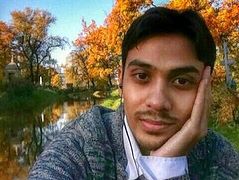
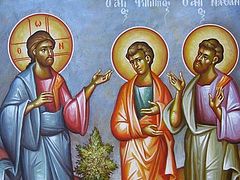
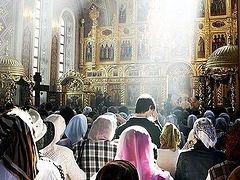
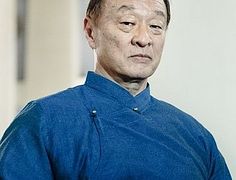
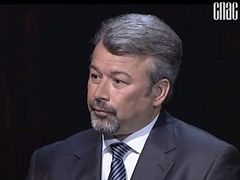

If someone wants to meet and communicate, then write here https://www.facebook.com/avdiy